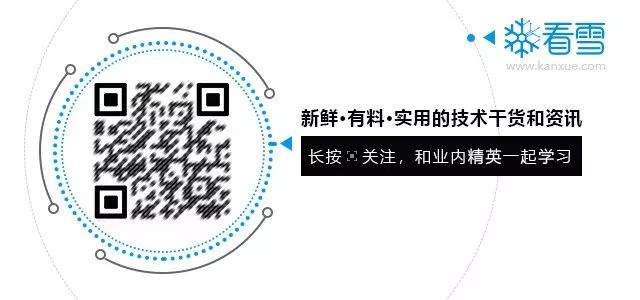
一
careful
Just_An_APIH00k11.com二
babyre
resource hacker把资源复制下来。byte_7FF6DA64F000[3]将会被赋值为36。arr = [0x18, 0x57, 0x68, 0x64]
with open('COD101.bin', 'rb') as f:
b = f.read()
b = bytearray(b)
for i in range(len(b)):
b[i] = b[i] ^ arr[i % 4]
with open('COD_de.bin', 'wb') as f:
f.write(b)
class RC4:
def __init__(self, key) -> None:
self.key = key
self.S = 0self.__rc4_init__()
def __rc4_init__(self):
S = [i for i in range(256)]
j = 0
for i in range(256):
j = (2 * j + S[i] + key[i % len(key)]) % 256
S[i], S[j] = S[j], S[i]
self.S = Sdef rc4_encrypt(self, plain) -> list:
i = 0
j = 0
cipher = []
cnt = 0
for p in plain:
p = (p + 256 - cnt % 0xd) % 256
cnt += 1
i = (i + j) % 256
j = (j + self.S[i]) % 256
self.S[i], self.S[j] = self.S[j], self.S[i]
tmp = self.S[(self.S[i] + self.S[j] + j) % 256]
k = p ^ tmp
cipher.append(k)
return cipherkey = [0x5D , 0x42 , 0x62 , 0x29 , 0x3, 0x36 , 0x47 , 0x41 , 0x15, 0x36]
data = [0xF7, 0x2E, 0x34, 0xF0, 0x72, 0xCF, 0x5E, 0x0A, 0xBB, 0xEC, 0xB1, 0x2B, 0x70, 0x88, 0x88, 0xED,
0x46, 0x38, 0xDB, 0xDA, 0x6C, 0xBD, 0xD4, 0x06, 0x77, 0xF2, 0xCF, 0x56, 0x88, 0xC6, 0x31, 0xD2,
0xB7, 0x5A, 0xC1, 0x42, 0xB0, 0xF4, 0x48, 0x37, 0xF5, 0x2C, 0xF5, 0x58]rc4 = RC4(key)
plain = rc4.rc4_encrypt(data)
print(''.join(map(chr,plain)))
三
ez_exe
pyinstxtractor脱一下。#!/usr/bin/env python
# visit https://tool.lu/pyc/ for more information
# Version: Python 3.11import ctypes
from time import *
from ctypes import *
from ctypes import wintypes
from hashlib import md5class _STARTUPINFO(Structure):
_fields_ = [
('cb', c_ulong),
('lpReserved', c_char_p),
('lpDesktop', c_char_p),
('lpTitle', c_char_p),
('dwX', c_ulong),
('dwY', c_ulong),
('dwXSize', c_ulong),
('dwYSize', c_ulong),
('dwXCountChars', c_ulong),
('dwYCountChars', c_ulong),
('dwFillAttribute', c_ulong),
('dwFlags', c_ulong),
('wShowWindow', c_ushort),
('cbReserved2', c_ushort),
('lpReserved2', c_char_p),
('hStdInput', c_ulong),
('hStdOutput', c_ulong),
('hStdError', c_ulong)]class _PROCESS_INFORMATION(Structure):
_fields_ = [
('hProcess', c_void_p),
('hThread', c_void_p),
('dwProcessId', c_ulong),
('dwThreadId', c_ulong)]StartupInfo = _STARTUPINFO()
ProcessInfo = _PROCESS_INFORMATION()
key1 = bytes(md5(b'bin1bin1bin1').hexdigest().encode())
file = open('bin1', 'rb').read()
arr = range(len(file))()
open('bin1', 'wb').write(bytes(arr))
sleep(0)
bet = ctypes.windll.kernel32.CreateProcessA(b'bin1', ctypes.c_int(0), ctypes.c_int(0), ctypes.c_int(0), ctypes.c_int(0), ctypes.c_int(0), ctypes.c_int(0), ctypes.c_int(0), byref(StartupInfo), byref(ProcessInfo))
ctypes.windll.kernel32.WaitForSingleObject(ctypes.c_int(ProcessInfo.hProcess), ctypes.c_int(-1))
open('bin1', 'wb').write(file)
import marshal, dis f = open("ez_py.pyc", "rb").read()
code = marshal.loads(f[16:]) #这边从16位开始取因为是python3 python2从8位开始取
dis.dis(code)
Disassembly of <code object <listcomp> at 0x00000297CC7F8E70, file "ez_py.py", line 59>:
59 0 RESUME 0
2 BUILD_LIST 0
4 LOAD_FAST 0 (.0)
>> 6 FOR_ITER 50 (to 108)
8 STORE_FAST 1 (i)
10 LOAD_GLOBAL 0 (key1)
22 LOAD_FAST 1 (i)
24 LOAD_GLOBAL 3 (NULL + len)
36 LOAD_GLOBAL 0 (key1)
48 PRECALL 1
52 CALL 1
62 BINARY_OP 6 (%)
66 BINARY_SUBSCR
76 LOAD_GLOBAL 4 (file)
88 LOAD_FAST 1 (i)
90 BINARY_SUBSCR
100 BINARY_OP 12 (^)
104 LIST_APPEND 2
106 JUMP_BACKWARD 51 (to 6)
>> 108 RETURN_VALUE
from hashlib import md5 key1 = bytes(md5(b'bin1bin1bin1').hexdigest().encode())
# print(key1)
file = open('bin1', 'rb').read()arr = [key1[i % len(key1)] ^ file[i] for i in range(len(file))]
# open('bin1', 'wb').write(bytes(arr))
with open('bin1__','wb') as f:
f.write(bytes(arr))
from hashlib import md5 key1 = bytes(md5(b'bin2bin2bin2').hexdigest().encode())
# print(key1)
file = open('bin2', 'rb').read()arr = [key1[i % len(key1)] ^ file[i] for i in range(len(file))]
# open('bin1', 'wb').write(bytes(arr))
with open('bin2__','wb') as f:
f.write(bytes(arr))
bin2__btea函数里面是这个,这是一个xxtea算法。#include <iostream>
#include <stdio.h>using namespace std;
#include <stdint.h>
#define DELTA 0x7937B99E
#define MX (((z>>5^y<<2) + (y>>3^z<<4)) ^ ((sum^y) + (key[(p&3)^e] ^ z)))void btea(uint32_t* v, int n, uint32_t const key[4]) {
uint32_t y, z, sum;
unsigned p, rounds, e;
if (n > 1) { /* Coding Part */
rounds = /*6 + */52 / n;
sum = 0;
z = v[n - 1];
do {
sum += DELTA;
e = (sum >> 2) & 3;
for (p = 0; p < n - 1; p++) {
y = v[p + 1];
z = v[p] += MX;
}
y = v[0];
z = v[n - 1] += MX;
} while (--rounds);
}
else if (n < -1) { /* Decoding Part */
n = -n;
rounds = /*6 + */52 / n;
sum = rounds * DELTA;
y = v[0];
do {
e = (sum >> 2) & 3;
for (p = n - 1; p > 0; p--) {
z = v[p - 1];
y = v[p] -= MX;
}
z = v[n - 1];
y = v[0] -= MX;
} while ((sum -= DELTA) != 0);
}
}int main()
{
uint32_t const key[4] = { 0x4B5F, 0xDEAD, 0x11ED, 0xB3CC };
uint32_t data[11] = { 0xCC45699D, 0x683D5352,0xB8BB71A0,0xD3817AD,0x7547E79E,0x4BDD8C7C,0x95E25A81,0xC4525103,0x7049B46F,0x5417F77C,0x65567138 };
uint32_t* sent = data;
//btea(sent, 11, key);
//printf("coded:%x %x\n", sent[0], sent[1]);
btea(sent, -11, key);
//printf("decoded:%x %x\n", sent[0], sent[1]);
for (int i = 0; i < 11; i++) {
for (int j = 0; j < 4; j++)
{
printf("%c", sent[i] & 0xff);
sent[i] >>= 8;
}
}
return 0;
}
//DASCTF{7eb20cb2-deac-11ed-ae42-94085339ce84}
四
cap
43 4D。enc_by_dasctf的第2个和第3个字符,按照这个序列,我们向后将密钥向后延申看看后面的情况如何。key = "enc_by_dasctf"
with open('cap.bin', 'rb') as f:
s = bytearray(f.read())
for i in range(len(s)):
s[i] ^= ord(key[(i+1) % len(key)])
with open('flag.bmp', 'wb') as f:
f.write(s)
五
unsym
import gmpy2
from Crypto.Util.number import long_to_bytesn = 0x1d884d54d21694ccd120f145c8344b729b301e782c69a8f3073325b9c5
p = 37636318457745167234140808130156739
q = 21154904887215748949280410616478423
c = 0xfad53ce897d2c26f8cad910417fbdd1f0f9a18f6c1748faca10299dc8
e = 0x10001
phi = (p - 1) * (q - 1)
d = gmpy2.invert(e, phi)
m = pow(c, d, n)
print(long_to_bytes(m))
# [email protected]_RSA_enc7ypt
from Crypto.Cipher import AES password = b'[email protected]_RSA_enc7ypt' # 秘钥必须为 16 字节或者 16 字节的倍数的字节型数据
iv = b'[email protected]_RSA_enc7ypt' # iv 偏移量,bytes 类型
with open('encrypted.bin','rb') as f:
en_text = f.read()
aes = AES.new(password, AES.MODE_CBC, iv) # CBC 模式下解密需要重新创建一个 aes 对象
de_text = aes.decrypt(en_text)
with open('decrypt.exe','wb') as f:
f.write(de_text)
看雪ID:oacia
https://bbs.kanxue.com/user-home-963320.htm
# 往期推荐
3、安卓加固脱壳分享
球分享
球点赞
球在看
如有侵权请联系:admin#unsafe.sh